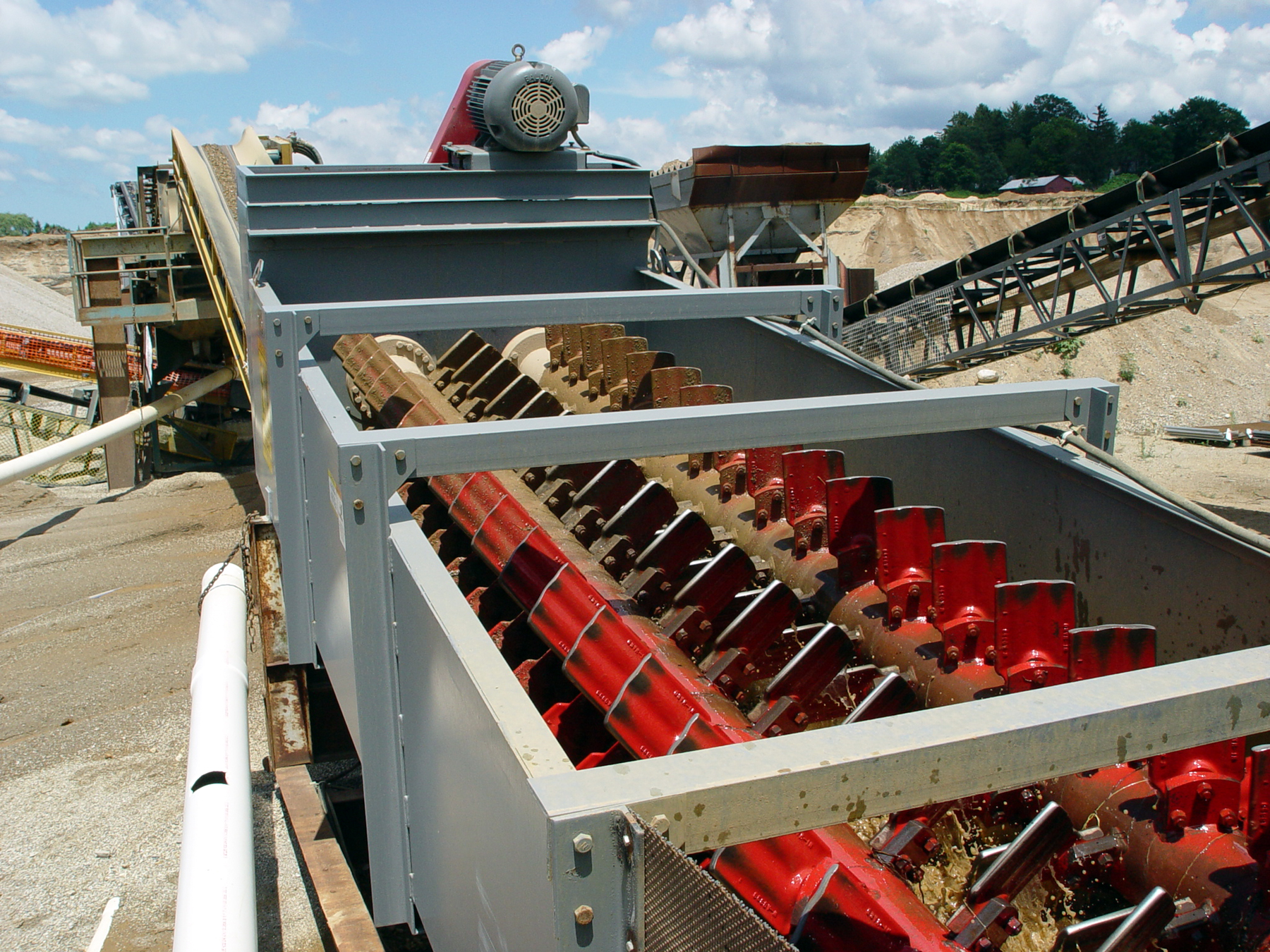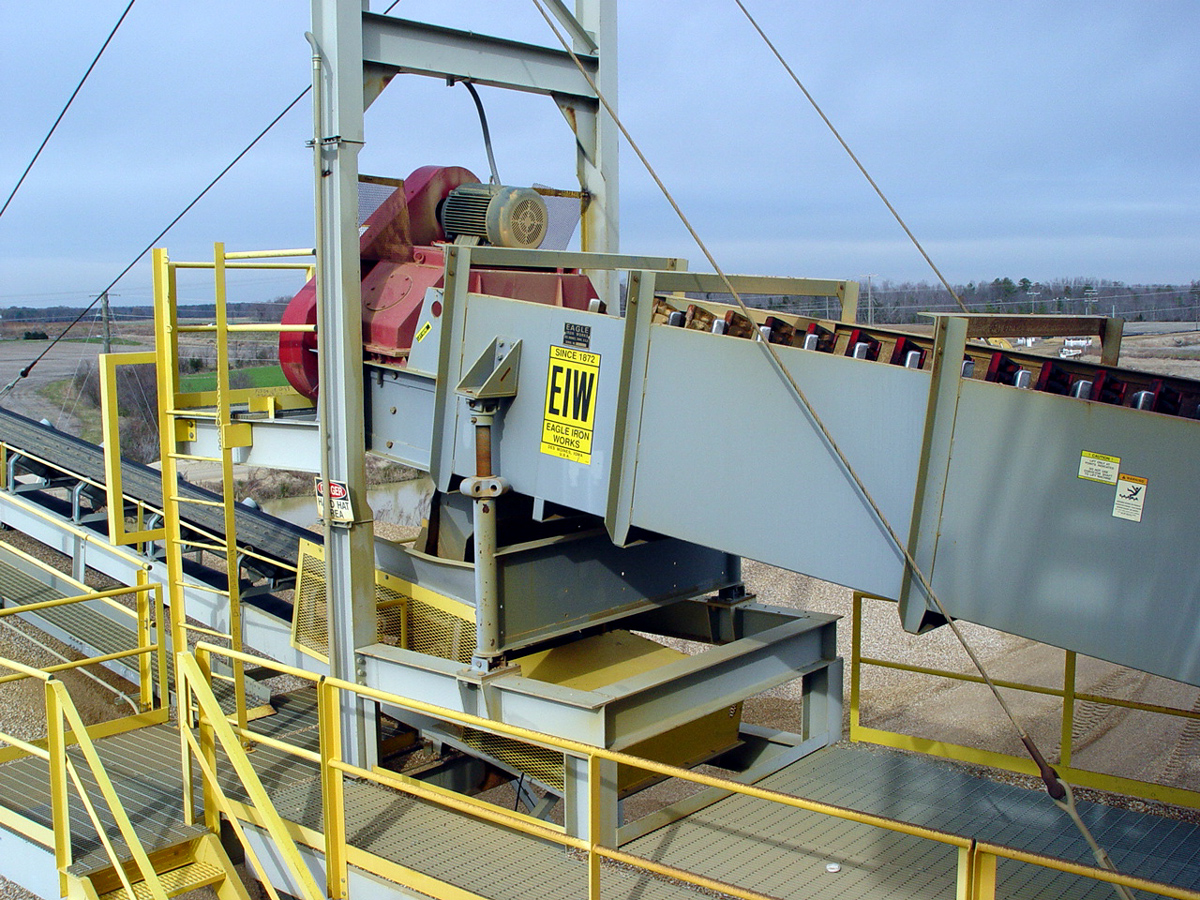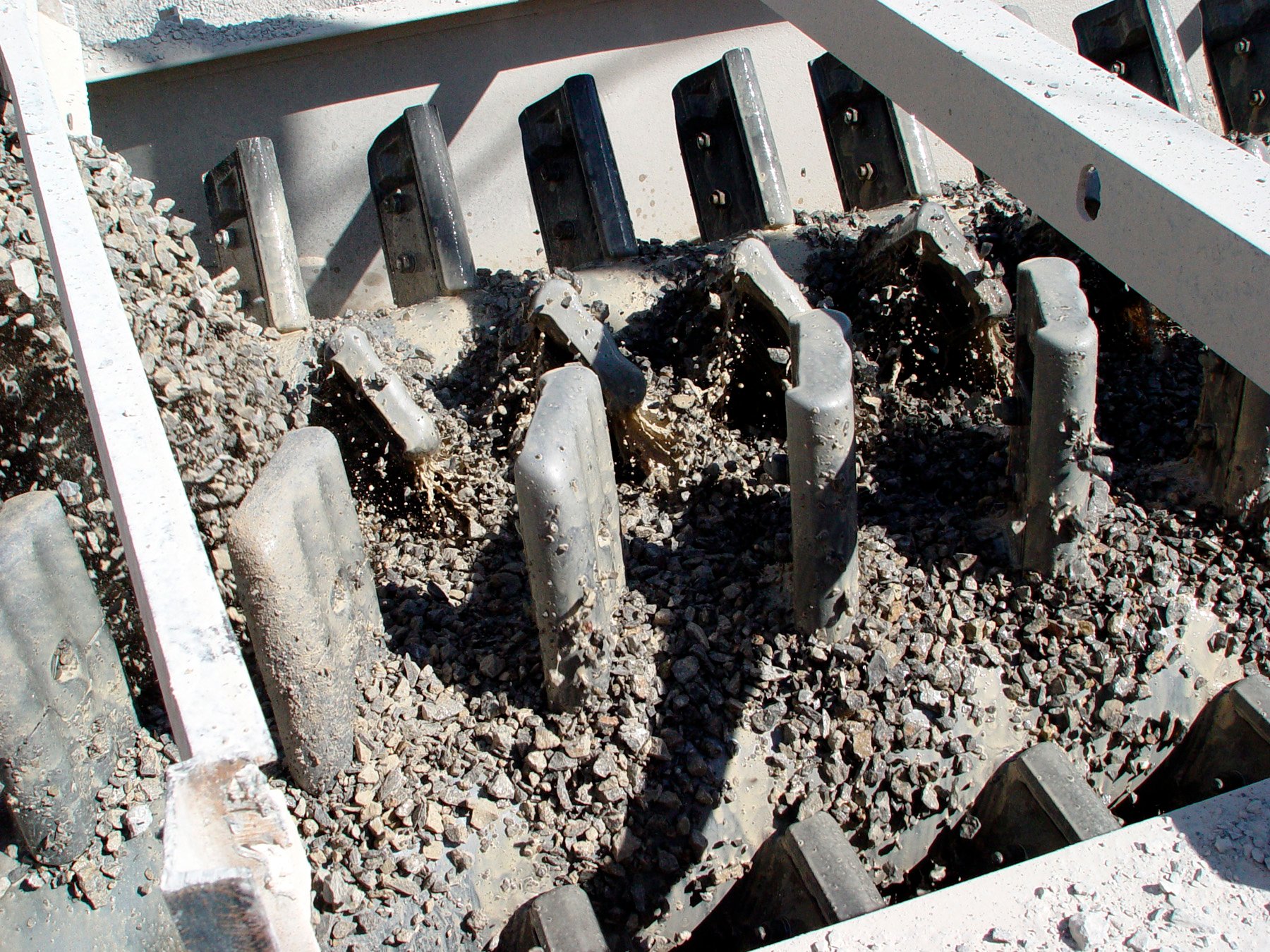
Log Washer vs. Sol-Clay Washer: Which Should I Choose?
When it comes to removing clay material from gravel, Sol-Clay Washers and Log Washers are two options to consider. Both have been proven in many applications to remove deleterious materials and produce gravel that meets end-use specifications.
But which one is the best option?
To help you make a decision, let’s take a look at the differences (and the similarities) between Sol-Clay Washers and Log Washers.
Sol-Clay Washers
Sol-Clay Washers are designed for heavier-duty scrubbing than Coarse Material Washers. As their name implies, they are intended to remove water-soluble material from gravel feeds.
Sol-Clay Washers are not intended for:
- Removing insoluble or plastic clays
- Breaking down cemented aggregates
For gravel feeds with these types of deleterious materials, a Log Washer is better suited.

How Sol-Clay Washers work
Intermeshing corrugated paddles running the full length of two counter-rotating shafts inside the Sol-Clay Washer provide the scrubbing and abrading action needed to break up the water-soluble material, which (because it is water-soluble) then dissolves in the wash water. The dissolved material washes up and out of the tub by wash water current rising from a perforated manifold in the bottom of the tub.
The tub length provides an ample scrubbing and dewatering area for the material being conveyed to the discharge opening by the paddles. To ensure maximum scrubbing action, Sol-Clay Washers should be operated with a low water volume and a low pool level. Gravel discharged from the Sol-Clay Washers should be rinsed with a screen to remove any lingering residue.
What Sol-Clay Washers process
Sol-Clay Washers can process aggregate material with maximum sizes of 2” to 2.5” depending on the size of the machine. Machines with larger diameter shafts can process larger material and more tons per hour than machines with smaller diameter shafts. However, larger Sol-Clay Washers also require more electricity to turn the shafts and more water to wash the material.
Log Washers
Log Washers thoroughly break down, scour and clean the toughest materials. Log Washers are designed to handle tough, insoluble clays and conglomerates that are too difficult to break up in screw washers or Sol-Clay Washers.

How Log Washers work
Similar to Sol-Clay Washers, Log Washers also employ corrugated paddles running the length of two counter-rotating shafts to remove deleterious material. Like the Sol-Clay Washer, the paddles subject the material to a persistent grinding and abrading action, and a rising current of wash water floats out foreign matter. However, the paddles used on a Log Washer are much larger than the ones used on Sol-Clay Washers.
The tub of a Log Washer is also longer than that of a Sol-Clay Washer, providing an extended time of extreme cutting and abrading. Since soluble clays may require more water than tough, insoluble clays, a valve is used to control the flow of water to the tub. The depth of water is controlled by the overflow gates. Depending on the deleterious material being removed with a Log Washer, it may be advantageous to reduce the amount of water to increase the scrubbing action.
Log Washer tubs slope about 8 degrees, but the slope can be increased or decreased to account for a change in the feed material in certain applications via an optional jacking device. Increasing the tub slope reduces capacity, while decreasing the tub slope increases capacity.
As with the Sol-Clay Washer, it is recommended a rinse screen follow the Log Washer to remove any residual matter from the product.
What Log Washers process
Depending on the diameter and length of the log shafts, Log Washers can process material with a maximum size of 2.5” to 4” at up to 190 tons per hour. To process material at the upper end of the maximum, special paddle spacing is needed and capacity may be somewhat reduced. Note that oversize material will damage the machine.
Horsepower requirements can also vary depending on the material being processed. For example, crushed stone requires 10% to 15% more horsepower than gravel.

Special Log Washers
Log Washers can be sized for processing ores like iron, hard and soft manganese, and phosphate. For these special applications, the paddle type and size, as well as the speed of the log shafts must be taken into consideration depending on the characteristics of the material to be processed. For example, soft material requires a slurrying action rather than an abrading action to remove deleterious material; therefore, a slower log speed is needed, lowering both power requirements and capacity.
Choosing the right machine
Choosing between a Log Washer and Sol-Clay Washer to remove deleterious material from your gravel depends on the characteristics of the deleterious material itself. If the material is water-soluble, a Sol-Clay Washer can provide the scrubbing capabilities to remove it. If the material is insoluble or a clay high in plasticity, a Log Washer is the better choice, as it was specifically designed to remove such material.
While this provides a starting point for your consideration, it is best to contact the manufacturer to assess your particular application and provide a recommendation. Eagle Iron Works engineers can help you analyze your material and determine which machine is the best choice for your application. Contact us today for assistance!



